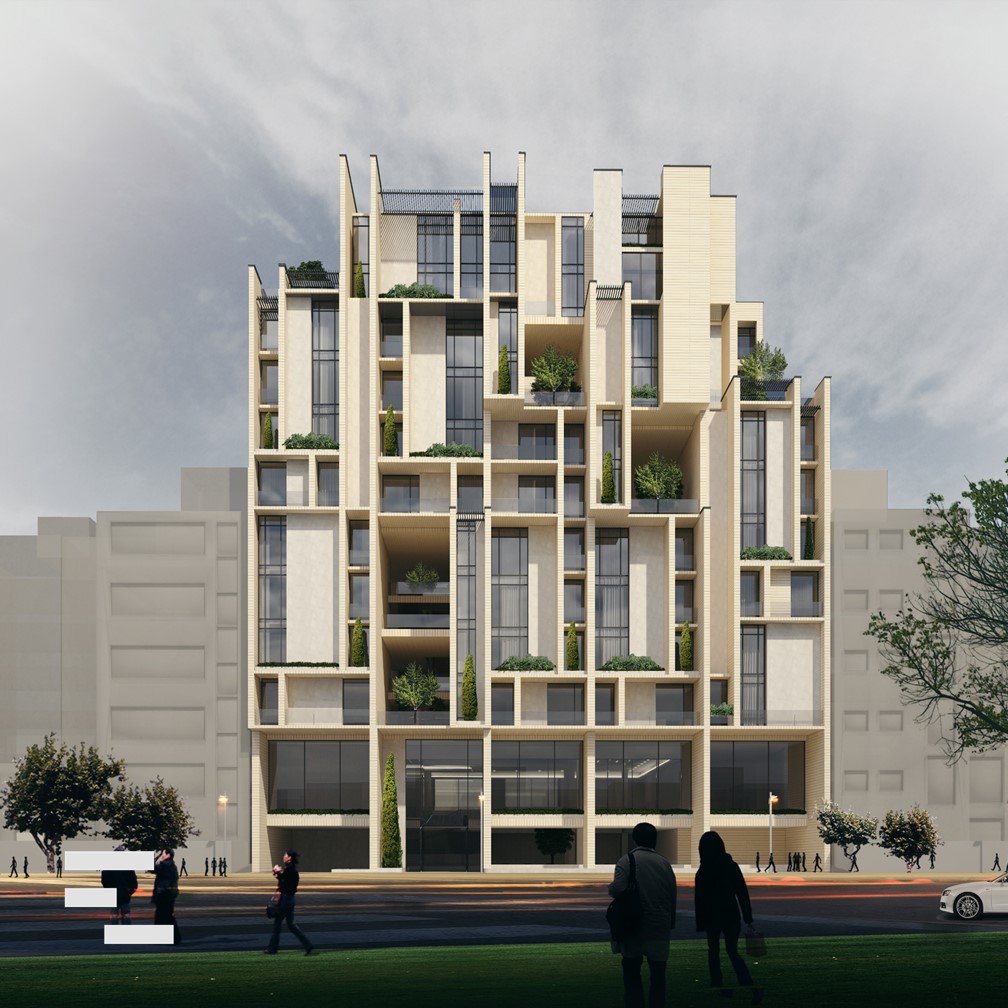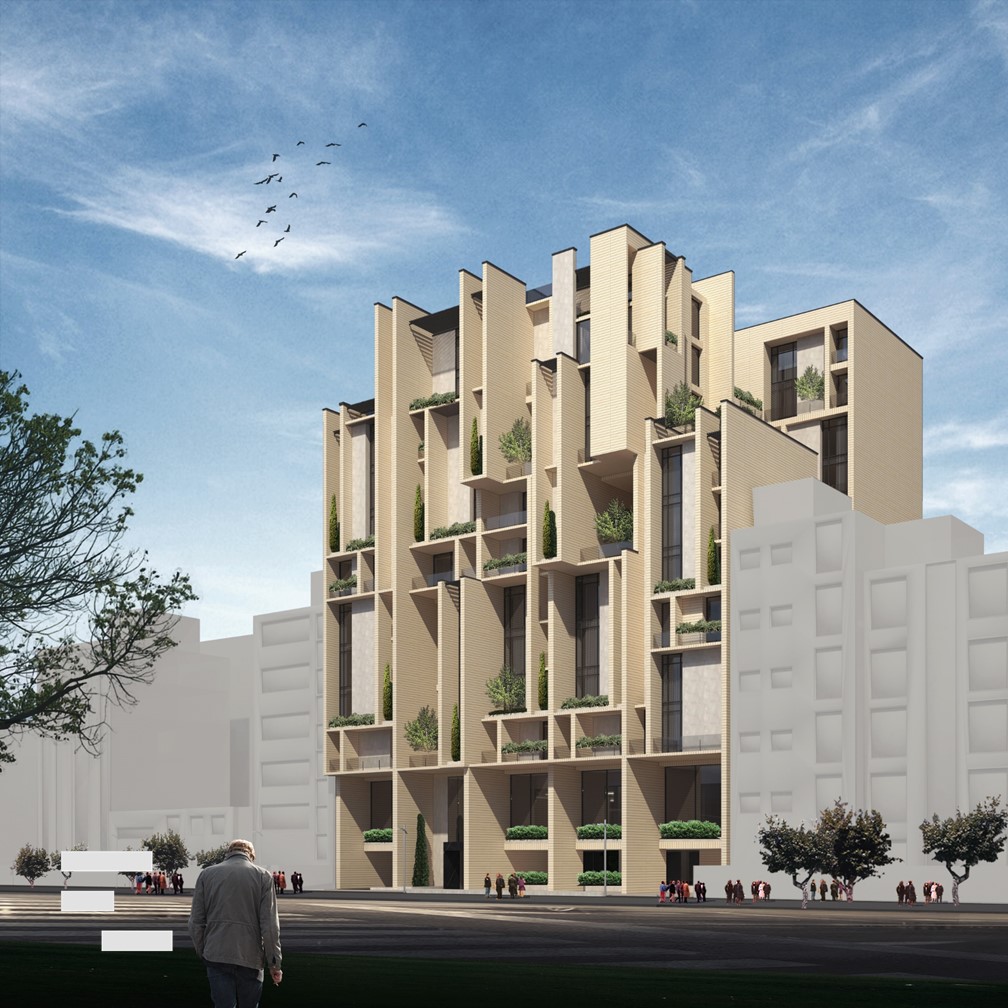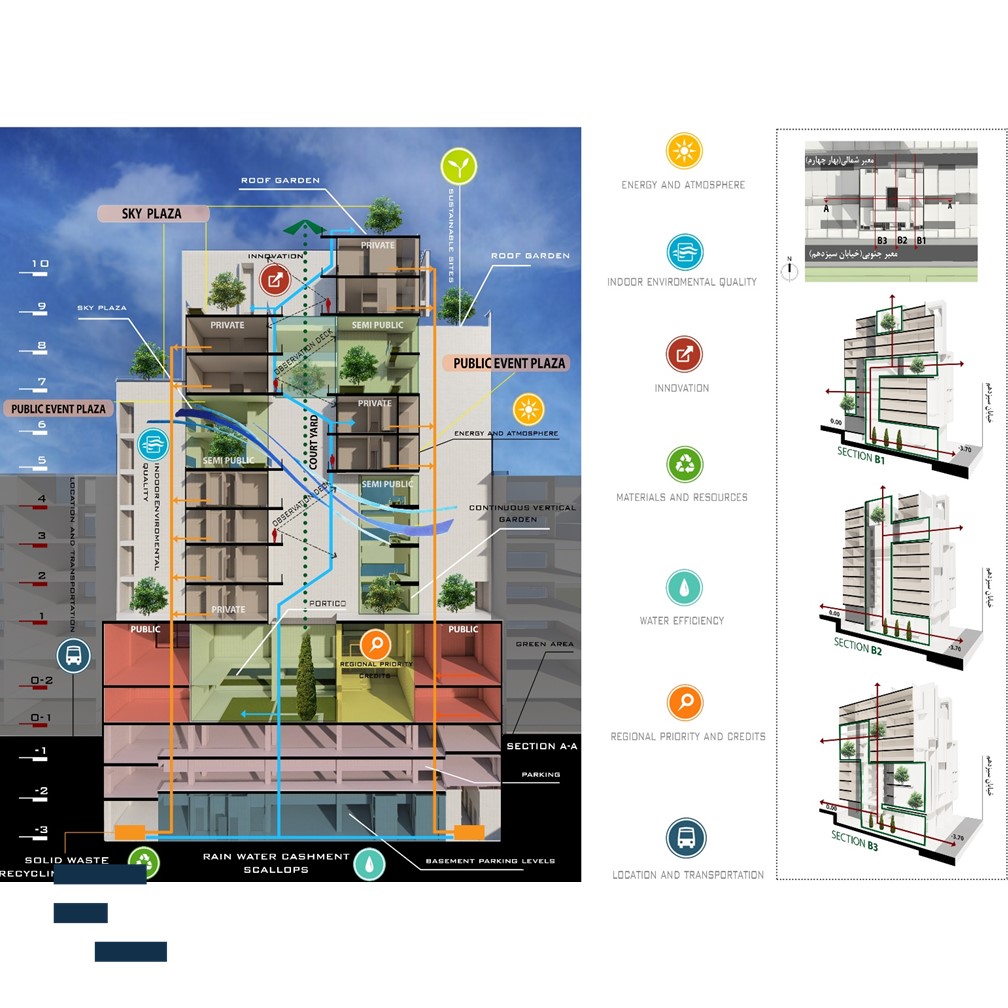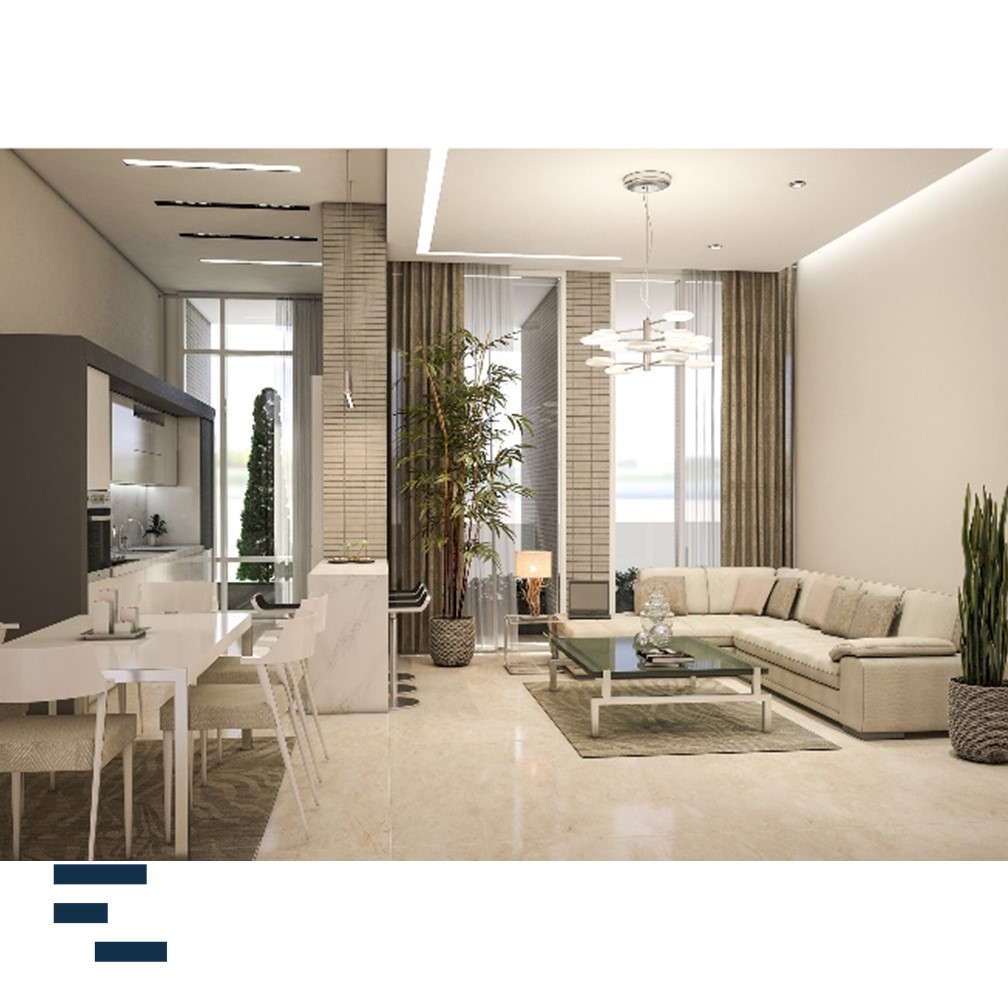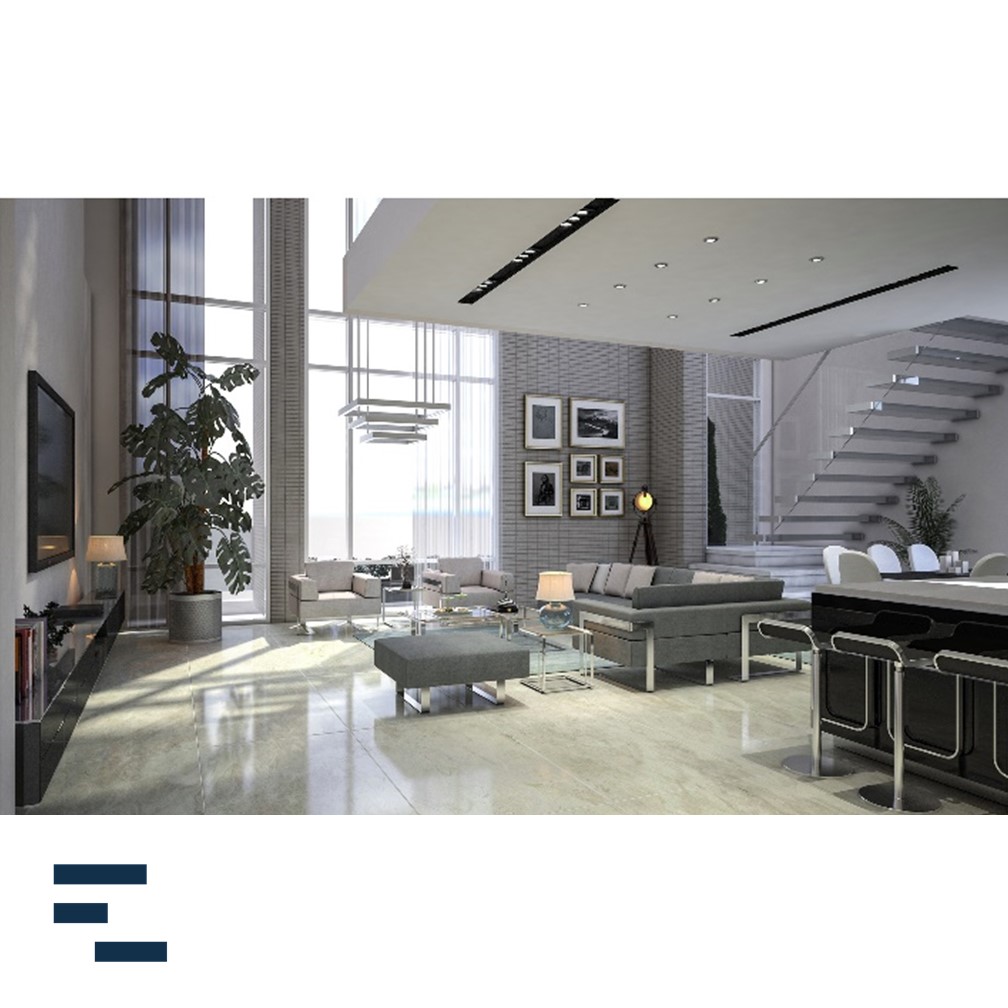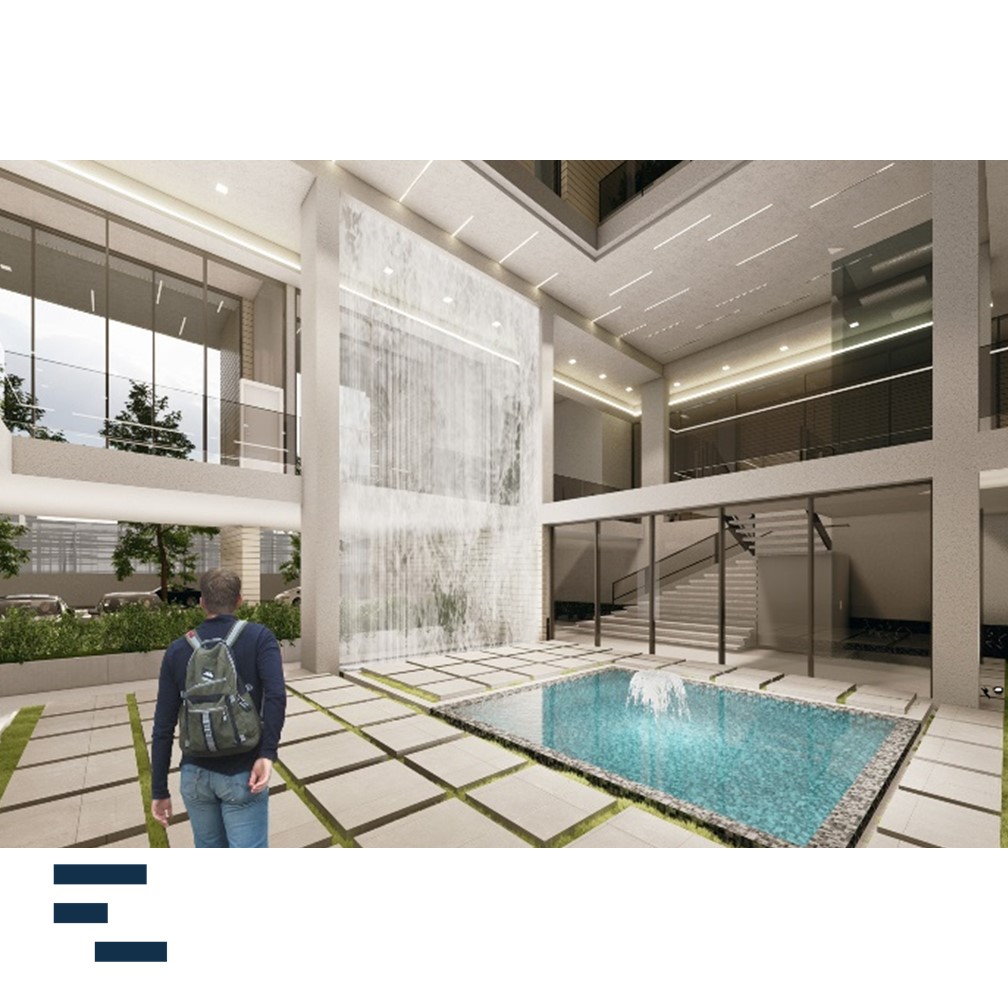Sabaat – Emarate Khorshid office
Theoretical foundations and origin of the plan:
* Interpretation of Iranian architectural patterns on a large scale and components
In the “macro scale” in the structure of the city and the neighborhood unit, disorder and virtual concepts (SUBLIME) are influenced by the philosophy of Aristotelian illumination, which is reflected in Suhrawardi’s sensory approach to nature.
In the “scale of components” readability and use of Platonic geometry, which in the courtyards and spatial patterns of each part of the house can be understood as unity and modulation to interior decoration, which arises from the Neoplatonic rationalist logic of Bu Ali Sina onwards in philosophy.
* Observe urban considerations:
• Paying attention to the skyline of the plan in two adjacent texture scales of the neighborhood and high-rise buildings of urban scale.
• Observe the spatial arrangement in accordance with the granulation of the surrounding tissue.
• The need for readability of the building in two neighborhood wall scales and urban scale (LANDMARK)
• Creating a hierarchy of public, semi-public to private arenas by creating a central courtyard connected to the walkway and private courtyards related to neighborhood units at height.
* Architectural consider#ations
• Provide maximum occupancy level and allowable density for maximum economic efficiency
• Observing the ratio of common to useful residential spaces at the design scale
• Observing the maximum number of southern skylights in order to improve the quality of the units
• Utilizing proper light and vision of east and west from the sixth floor onwards, which has passed through the roof area of the adjacent texture floors
• Observance of the hierarchy of movement spaces at height from open ,semi-open and closed space through the main courtyard of movement corridors to the residential unit
